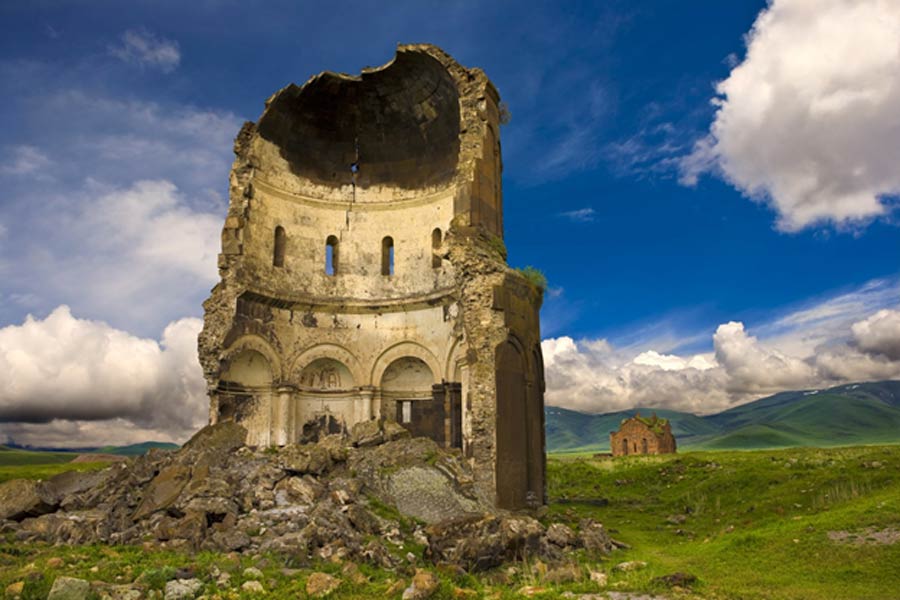
Archaeologists Uncover Armenia’s Oldest Known Church in Ancient City Excavation

**Archaeologists Uncover One of the Oldest Known Christian Churches in Armenia**
A team of German and Armenian archaeologists has recently made a groundbreaking discovery: the ruins of what could be one of the oldest known Christian churches in Armenia, found in the ancient city of Artaxata. This discovery adds to the growing body of evidence about early Christianity’s significant presence in Armenia, a country historically recognized as the first nation to adopt Christianity as its state religion.
### A Historical and Cultural Breakthrough
The church, believed to date back to the fourth century, was uncovered during the Armenian-German Artaxata Project initiated in 2018. This collaborative archaeological effort is led by Achim Lichtenberger and Torben Schreiber from the University of Münster, alongside Mkrtich Zardaryan and Hayk Gyulamiryan of the National Academy of Sciences of Armenia. Specialists from various disciplines—including dendrochronology, radiocarbon dating, and archaeobotany—are also contributing to the project.
Lichtenberger, one of the project’s co-directors, described the discovery as “sensational evidence for early Christianity in Armenia.” The church marks one of the most significant finds related to early Christian architecture, further highlighting Armenia’s deep-rooted Christian culture.
### Geographic and Architectural Context
Artaxata, the site of the excavation, was once the capital of the Kingdom of Armenia. The church is located near the famous Khor Virap Monastery, closely associated with the imprisonment of Gregory the Illuminator, the founder of the Armenian Apostolic Church. Gregory famously converted King Tiridates III to Christianity in 301 CE, making Armenia the first official Christian nation in the world.
The newly found church has an octagonal layout with cruciform extensions—a type of architecture that was previously unknown in Armenia but familiar in the Eastern Mediterranean. According to Zardaryan, one of the Armenian co-directors, “Octagonal churches were unknown here until now, but we are familiar with them from the Eastern Mediterranean region, where they first appeared in the fourth century AD.”
### Findings and Initial Excavations
The church itself is approximately 98 feet (30 meters) in diameter, featuring a simple mortar floor and terra cotta tiles. Initial radiocarbon dating of wooden platforms inside the structure places the construction in the mid-fourth century, further supporting its status as one of the oldest Christian structures in this region.
Intriguingly, several samples of marble were also uncovered, indicating that materials had been imported from as far as the Mediterranean to embellish the church. The structure appears to have been intentionally destroyed at some point in history, leaving archaeologists with only fragments of roof tiles, beams, nails, and marble from which to piece together the past.
Magnetic prospections conducted in early 2024 gave further clues about the octagonal plan of the building. Excavations that took place later in the year confirmed the magnetic data, allowing researchers to identify the structure.
### Cultural and Religious Significance
This discovery is more than just a historical milestone; it provides a tangible link to Armenia’s early Christian heritage. The site’s proximity to Khor Virap, a monastery keeping the legacy of Gregory the Illuminator alive, reinforces both its religious and cultural symbolism. The discovery strengthens Armenia’s narrative as a pivotal location in the development of early Christian traditions.
However, the church appears to have suffered significant damage over the centuries. Lichtenberger noted that the building was “heavily (probably intentionally) ruined,” leaving only traces of its original belongings and artifacts. Despite this, the archaeological team continues to investigate the site, hoping to answer essential questions, including the church’s original religious dedication and its role in early Christian history.
### Preservation Amidst Ongoing Threats
The discovery in Artaxata also coincides with growing international concerns over the destruction of Armenian cultural heritage, particularly in Artsakh (Nagorno-Karabakh). Since Azerbaijan forced over 100,000 ethnic Armenians from their homes, numerous Armenian churches, monuments, and landmarks have faced erasure or destruction. This discovery in Armenia underscores the importance of preserving cultural and religious landmarks in regions affected by conflict.
For Armenia, early Christian monuments like this church and the Khor Virap monastery serve not only as key aspects of its cultural identity but also as symbols of resilience in the face of current threats to its heritage.
### Ongoing Research and Excavation
As excavation continues, the researchers are focused on gathering more information about the church’s construction, layout, and origins. While much has already been uncovered, many questions remain unanswered, such as the specific dedication of the church and its precise role in the Christianization of Armenia.
Nevertheless, the excavation of one of the earliest examples of Christian architecture in Armenia underscores the country’s paramount place in early Christian history. The work of this international team of scholars will likely continue to shed much-needed light on crucial periods of Armenia’s religious and cultural development.
This discovery is